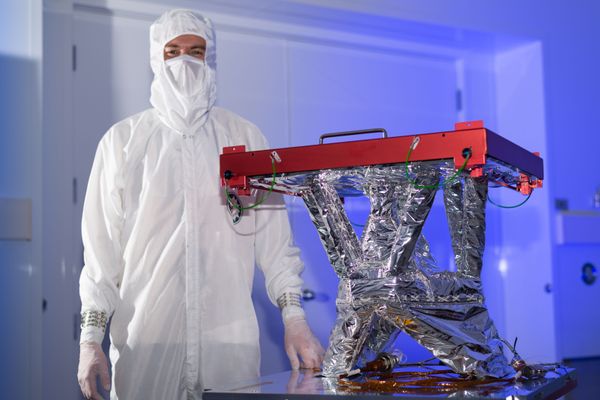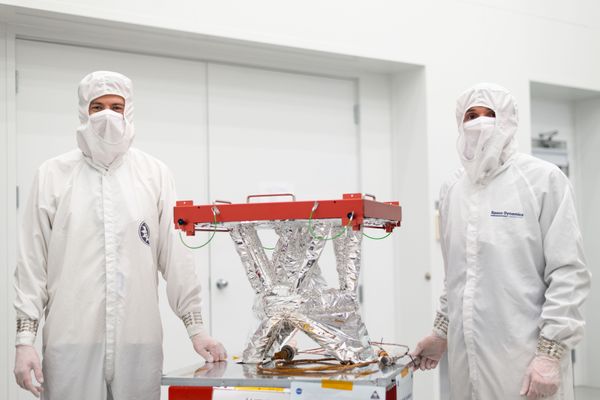Mission Facts
Objective: Study Jupiter’s moon Europa, focusing on its composition, geological features, icy shell, and the ocean beneath it
Launch: 2024
Type: Orbiter/Flyby
Our Contributions
SDL provided the following mission activities:
- Radiator Cryocooler Mount (RCM) assembly design, build, and test for the MISE instrument

Exploring Europa with MISE
Europa is one of Jupiter’s largest moons. This icy moon shows evidence of a huge saltwater ocean beneath its surface, containing twice as much water as Earth’s oceans combined. After traveling 1.8 billion miles and arriving at its destination, NASA’s Europa Clipper—the largest spacecraft ever built for a planetary mission—will conduct 49 flybys of Europa. Instruments will gather data about Europa’s ocean and determine whether the moon contains organic compounds and energy sources under its surface that could make it habitable.
Europa Clipper has been designed to withstand Jupiter’s punishing environment. In such an environment, protecting sensitive instruments is critical. We designed, built, and tested the RCM assembly for MISE, one of Europa Clipper’s nine science instruments. Developed by NASA’s Jet Propulsion Laboratory, MISE is an infrared spectrometer designed to map Europa’s distribution of ices, salts, organics, and hotspots by imaging reflected infrared light and separating it into its various wavelengths. The RCM will transfer extreme heat away from MISE and also protect the cryocooler and radiator from getting too cold.


